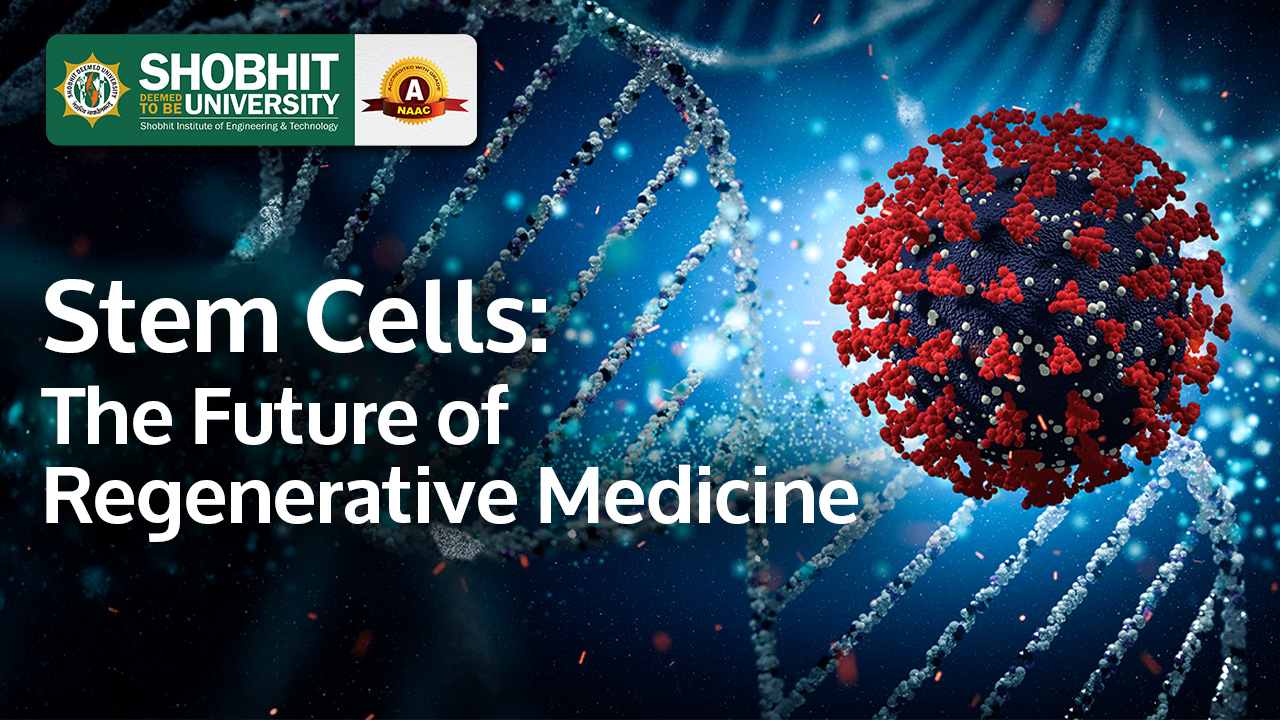
Stem Cells: The Future of Regenerative Medicine
Stem cells are often described as the body’s raw materials, possessing two remarkable traits that set them apart: they remain unspecialized and have the unique ability to self-renew
indefinitely while also differentiating into specialized cell types. These extraordinary properties are pivotal in the field of regenerative medicine, particularly for their vast potential in repairing tissues that have been damaged by injury or disease. So,
What exactly are stem cells?
They can be categorized into three distinct types: embryonic stem cells, adult stem cells, and induced pluripotent stem cells (iPSCs). H2
Embryonic Stem Cells: These specific stem cells are noteworthy for their pluripotent nature, meaning they have the unique potential to develop into any type of cell found within the body. However, their use is shrouded in profound ethical controversy, which presents a considerable challenge for researchers, practitioners, and society at large. Adult Stem Cells: Unlike their embryonic counterparts, adult stem cells are classified as multipotent, meaning they are tissue-specific in their capabilities. Their primary role is to maintain and repair the tissues in which they exist, making them fundamentally essential for overall health and recovery within those particular anatomical areas. Induced Pluripotent Stem Cells (iPSCs): iPSCs take things a significant step further. They are ingeniously engineered from adult somatic cells and exhibit pluripotency, like embryonic stem cells, but without the accompanying ethical dilemmas
that have generated much debate. This innovative approach provides an exciting and promising avenue for research and therapy that can potentially circumvent some of the moral complexities. The true magic of stem cells lies in their remarkable capacity to generate the necessary cell types for repairing vital organs or tissues. We’ve seen some tangible successes in treatment areas, particularly such as hemopoietic (blood) disorders. However, the broader scope of application remains somewhat limited, especially when it concerns more
complex organs like the heart or brain. The hurdles we face in this field include ensuring the viability and functionality of implanted cells, addressing immune rejection, and preventing
potential tumor formation, which poses significant concerns. Recent advancements in the field of stem cell therapy are nothing short of exciting. Innovative techniques, including the reprogramming of somatic cells and the integration of bioengineering concepts, are actively taking the field into new, promising directions. Clinical trials are currently underway, aiming to develop safe and effective therapies for a variety of conditions, including prevalent issues like diabetes, heart disease, and certain neurodegenerative disorders. Despite these advancements, the journey of stem cell research is not without its numerous obstacles. Challenges related to regulation, ethical issues, and public perception must be transparently addressed and resolved to facilitate forward progress in this rapidly evolving field. Moreover, the importance of interdisciplinary collaboration in stem cell research cannot be overstated. Education and public awareness are vital components for fostering understanding and promoting further research funding, ensuring that this
innovative potential can be realized. As personalized medicine continues to rise in prominence and relevance, we see substantial opportunities for creating tailored therapies that are based on individual genetic profiles. Investment in stem cell research has indeed grown considerably, yet a delicate balance between public sector funding and private investment remains critical to ensuring sustained progress in this transformative sector of medicine. In conclusion, while stem cells offer remarkable hope for the future of regenerative medicine, transforming scholarly research findings into effective and accessible treatments necessitates ongoing commitment and relentless innovation. The road ahead may be long and fraught with challenges, but the potential rewards that stem cell science promises are genuinely transformative and worth pursuing. Stay tuned as we continue to explore and uncover more about this fascinating and ever-evolving field in our future posts!
